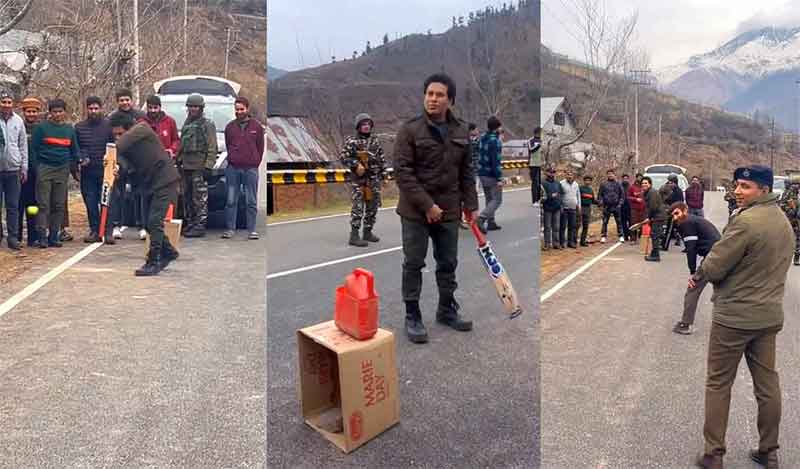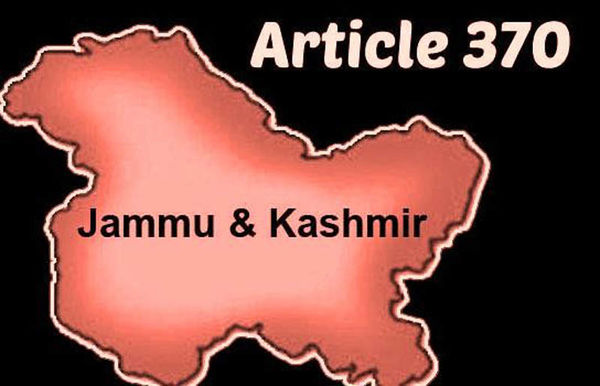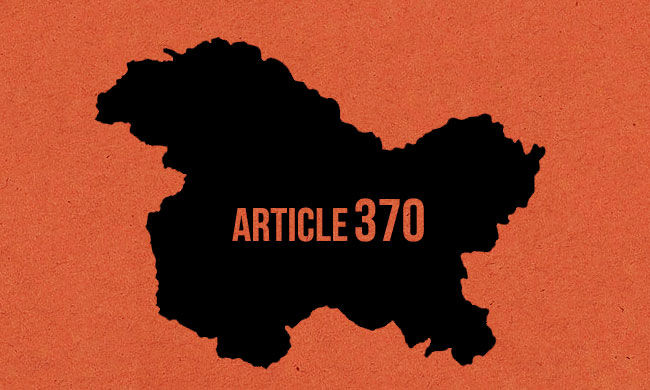
A daughter still waits for her father to wed her off. A wife searches for her husband. And a mother still pines for her son and waits for him to be a pallbearer when she dies. Shahnaz Bashir
The continuous conflictive conditions in Kashmir and its illegal occupation by the Indian military have caused a massive and unimaginable devastation mainly in terms of human capital and economic development. The main victims of this illegal occupation and conflict are Kashmiri women who are vulnerable to the scandalizing issues of rape, abduction, widowhood and whatnot. Oppression of Kashmiri women under heavy Indian militarization has been mooted in novels like The Half Widow by Shafi Ahmad, Curfewed Night by Basharat Peer and The Half Mother by Shahnaz Bashir. The Half Mother vehemently depicts the oppression of Kashmiri women. It gives a detailed description of Indian military regime and its oppression on Kashmiris.
The Half Mother is an agonizing and tenebrific narrative by Shahnaz Bashir. It chronicles the pain and anguish undergone by Kashmiri women at the onslaught of military excesses and oppression. Women of Kashmir have always been at the epicentre of military atrocity and violence. The lives of Kashmiri women like the women of the Third World Countries (Africa, Somalia, Afghanistan, and Nigeria) have been blemished by the baleful issues of abduction, forced widowhood, and rape. Apart from this they are subjected to suffer the pain of the kidnapping, forced disappearance and killings of their husbands, brothers, fathers, and sons by the Indian military. The Indian military without any tangible information and evidence take away Kashmiri men from their homes only to separate them from their family members forever. They are made the blandishments of fake encounters and all that.
The Half Mother is one of the important polemical Kashmiri narratives in English that explicitly documents the trauma and pain of Kashmiri women who live under the debilitating shadows of military oppression and violence. This article attempts to argue, in the light of Shahnaz’s novel, how the conflict and army atrocities have unleashed an unmitigated crime on Kashmiri women and has led to their trauma and ceaseless suffering. The Indian military is mainly responsible for the pain and suffering of Kashmiri women in every respect. In this regard Dr Bashir Ahmad Dabla maintains that… the state –sponsored gun in the hands of military and Para-military forces led to all sorts of excesses against women including abusing their chastity. (Dabla 2009)
The focal character of the novel is Haleema: The Half Mother. Through the persona of Haleema, the novelist highlights the plight and vulnerability of Kashmiri women. In the novel, we see Haleema in the role of an orphan when her father Ghulam Rasool Joo is killed by the military men in front of her for no crime at all; we see Haleema in the role of a divorcee when she is divorced by her husband only after some months of marriage; and finally, we see Haleema in the role of The Half Mother when her only son Imran Joo is abducted by Major Manoj Kushwaha on the basis of mere suspicion and false identification by the nark. Women, as we know, are the victims of multiple problems and issues. Women have always been at the receiving end in every conflict. In this context Chandra Talpade Mohanty opines, “Women have never been secure within (or without) the nation state-they are always disproportionately affected by war, forced migration, famine, and other forms of social, political, and economic turmoil.” (514)
While going through the glum and gloomy pages of the novel, we come to know how Haleema is made to suffer the slings and arrows of separation of her son by the military men. The first arrow of pain is shot to her when Major Manoj Kushwaha along with his myrmidons in the broad day light kills her father- Ab Jaan, Ghulam Rasool Joo by bursting a volley of bullets into his chest. The novelist depicts this incident in the following words:
Three bullets were pumped into Ab Jaan. One in the neck. One in the heart. One in the stomach. The rapid staccato startled the birds in the plum tree. ‘Sisterfucker!’ Kushwaha said after killing Ab Jaan, the fevered barrel of his rifle still smocking. Haleema frenetically slapped her face and her chest and pulled her hair. Blood began to gurgle out of Ab Jaan’s throat. She fainted. The entire neighbourhood was now watching from their rooftops, verandahs and windows. Men and boys jumped off and rushed to help. Major Kushwaha cocked his gun. His men followed and pointed their guns at the people who tried to come towards the Joos. Women of the neighbourhood wailed from their rooftops and verandahs and pummelled their chests. The major fired some warning shots. ‘No one will come here. Whoever does shall meet the same fate!’ he announced (Half Mother 49)
With the killing of Haleema’s Ab Jaan in front of Haleema and her neighbours, the novelist highlights the inclemency of the Indian military through the character of Major Manoj Kushwaha and the helplessness of Haleema and the people of her vicinity. Haleem and her neighbours are not even allowed to touch Ab Jaan’s body till he breathes last. The novelist further portrays the horror of the killing in the following lines:
‘At least let us drape his body. We can’t bear looking at him like this, ‘the Imam requested.
‘No, let everyone see this! See what happens when you rebel against us,’ Kushwaha said and walked away.
A pool of blood gleamed in the dull sun near Ab Jaan’s body. His throat was scabbed. His eyes remained open and his mouth agape. Blood had started to congeal around the charred bullet holes on his pheran (Half Mother 50)
The novelist in the novel mainly shows the pain and tribulation of separation undergone by Haleema in particular and her ilk in general in context of the abduction of their loved ones. It is this pain of separation that looms large in the novel on the persona of the main character Haleema. After the killing of Haleema’s Ab Jaan, Haleema to some extent copes up with the pain, but the kidnapping of her lone son, Imran Joo by Major Manoj Kushwaha, crumbles and debilitates her in every respect. She loses physical strength as well as her sanity. She runs from pillar to post in search of her son- her only hope and strength. In this context, Dr. Ihsan Milk writes:
Imran’s arrest makes the beginning of the most agonising phase of Haleema’s life, the repercussions of which take a heavy toll on her physical and psychological health. She now embarks on a long, interminable, and demoralising journey. A journey of the unavailing endeavours of trying to find out the whereabouts of her only son. She moves from one army camp to another looking for her only son but no officer or cop at any of the camps claims to have seen him, she runs to the official electronic media to request them to bring her plight to the notice of the authorities only to come across a few abrasive men whose harsh words push her further down the vortex of despair (Ihsan 2014)
She makes use of all the means to get the trace of her son. When she runs out of money, she sells her cow and jewellery to her neighbour Shafiqa just for ten thousand rupees. The novelist depicts this as under:
Haleema sold her cattle to Shafiqa for ten thousand rupees, as well as her jewellery and more expensive copper utensils. The Joo house wore an empty look now. Each day, consoling neighbours would drop by, and once they left she would find herself entirely alone. She began talking to herself or to the walls. Sometimes, she would talk to the things that belonged to Imran, crying and wailing alternately. (Half Mother 69)
The separation of her son so much traumatises Haleema that she inadvertently takes out his clothes and starts conversing with them. She sings songs in Imran’s excruciating separation. Shahnaz depicts this as: She would often take his clothes. Kiss them and sniff them for his smell. Sniff them and neatly fold them again. Then, melancholically, she would croon a song:
Kyazi tscaa’i roodham maah-i-nam ke hilaal tai?
Doh goum pyaaraan, chhi na tsalaan malaal tai?
O crescent moon, why do you hide from me?
Sulking as you are, why have you kept me? (Half Mother70)
Haleema madly goes from one place to another place in search of her son but returns dejected and hopeless. Firstly, she goes to the radio station in order to give the news about the kidnapping of his son Imran but the news producer categorically tells her ‘Radio doesn’t air this kind of news’ (Half Mother 72).Through this the novelist tries to highlight with an added emphasis that nobody is ready to help her as helping her would risk the life of the helper. The only person, who tries to help Haleema in tracing the whereabouts of her son Imran, is a journalist Izhar but he fails in finding her son out. He fails because the men at the helm of affairs are inclement and unsympathetic towards the victims. Haleema on her own goes from prison to prison in search of Imran but from every prison she returns woeful and woebegone. On the information of some anonymous person she goes to Papa 2- a prison cum torture centre on Guphkar road Srinagar but alas! She returns heartbroken as Imran is not there. She meets Rehabar khan who tells her Imran probably is in Badami Bagh Cantonment. From there as well she comes back crestfallen. After this along with her neighbours she goes to Tihar gaol in search of Imran but once again no trace of her son. She goes to every morgue to find her son but returns dejected. The novel is emotionally chilling and hurtful as it depicts the pain and trauma undergone by the mother in search of her son who has been abducted by the men in uniform. In this connection Javaid bin Nabi writes:
The author of the book describes in detail the pain as well as tears that the poor mother sheds while waiting for her son’s return. Haleema, not knowing the whereabouts of her son dies a new death every day. The author of the book conveys how men in uniform directly or indirectly maligned and befouled every Kashmiri and left their families crippled. (Javaid bin Nabi 20016)
The absence of Imran from every gaol implies that he has been killed and thrown to any isolated and wild place. Such is the fate of the disappeared persons in Kashmir. Once they are picked up they disappear forever. Towards the end of the narrative, we come to know that Haleema loses her sanity in the waiting of her kidnapped son. She acutely pines for her son. She breathes her last and the final words that come out of her tongue are: ‘Imran saeba? Aakha? Imran. Have you come? (Half Mother 178). It is the pain of her son’s disappearance that leads to Haleema’s mental collapse and her death. The novelist depicts the scene of Haleema’s death as:
Haleema’s grave has been dug beside Ab Jaan’s, her father, amid a cluster of irises and their long knife-like leaves. The freshly dug soil makes a mound on the edge of the grave. Some boys open the coffin and gently lower into her final abode. The undertaker places a soft rock of soil under her head. The last rays of the sun shine on the grave as mourners start crossing handfuls of earth into the rectangular trench. (Half Mother 179)
In the light of Shahnaz Bashir’s The Half Mother, one may conclude that the life and fate of Kashmiri women have been sabotaged by the military oppression and atrocities. It is the atrocity unleashed by the military men that leads to their orphanage, widowhood, and compels them to become the Half Mothers and thereby leads to their traumatic conditions. The character of Haleema serves as microcosm of the macrocosm for the sorry plight of the Kashmiri women. Thousands of Kashmiri women like Haleema have been pining for the disappeared sons, husbands, and fathers and thousands like Haleema have lost their senses and died in the hopeless waiting of their loved ones. The novelist has dauntlessly contested the injustice and oppression unleashed by the military men on the helpless and innocent people of Kashmir. The novelist through the character of Haleema has universalised the pain of Kashmiri women. The novel is a perfect narrative of pain and trauma of Kashmiri women in the face of military oppression and violence.
Freedom cannot be achieved unless the women have been emancipated from all forms of oppression. Nelson Mandela
Works cited:
Bashir, Shahnaz. The Half Mother. India: Hachette India, 2014.Print.
Dabla, Bashir. “Violence against women in Kashmir.” Kashmir life: 8August2009.Google.Web.7 August 2016
http://www.kashmirlife.net/violenceagainstwomeninkashmir369/
Bin Nabi, Javaid. “The Half Mother.” Kashmir Observer: 29 March 2016.Google.Web.11 August 2016
https://kashmirobserver.net/2016/reviews/halfmother4890
Malik, Ihsan. “The Half Mother- A Novel to Cherish. “Greater Kashmir. 26 June 2014.Google.Web.11 August 2016
http://www.greaterkashmir.com/news/gkmagazine/thehalfmotheranoveltocherish/172 928.html
Mohanty, Chandra Talpade. “Under Western Eyes: Feminist Scholarship and colonial Discourse. Feminism without Borders: Decolonising Theory, Practicing Solidarity.” New Delhi: Zuban Publication, 2003. Print.
Bilal Ahmad Dar is a Research Scholar at the Department of English, AMU, and can be mailed at [email protected]
SIGN UP FOR COUNTERCURRENTS DAILY NEWS LETTER















































